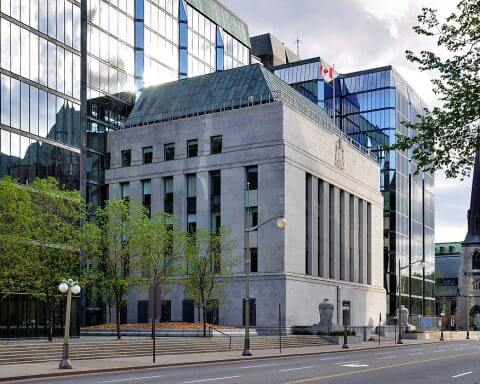Andhra Azevedo is a staff lawyer with Ecojustice, a national environmental law charity.
Patrick DeRochie is the senior manager for Shift: Action for Pension Wealth and Planet Health.
Canada’s pension beneficiaries are increasingly worried about how their pensions are being invested in the face of a rapidly worsening climate crisis.
A growing number of Canada’s largest public pension administrators and investment managers have made net-zero-emissions commitments. But most funds continue to keep their beneficiaries in the dark about how they plan to achieve these pledges and manage climate-related financial risks.
Over the last two years, nearly 2,000 beneficiaries of Canada’s 10 largest pension funds, which collectively manage more than $2 trillion in retirement benefits, have written to their pension administrators and investment managers asking for transparency on how their retirement savings are being invested.
In September 2021, a group of beneficiaries sent letters with detailed questions to these funds warning them of their fiduciary duty to assess, disclose and manage climate-related financial risks, backed by research from Shift Action for Pension Wealth and Planet Health and a legal backgrounder from Ecojustice.
Signatories, who included healthcare professionals, teachers, scientists and others, asked for information about the funds’ exposure to high-risk fossil fuel companies, the funds’ vulnerability to varying climate scenarios, and how the funds were addressing climate-related risks and investing in climate solutions.
Beneficiaries asked for a response from their pension administrators by the end of 2021. Nine of the 10 pension funds responded to beneficiaries; the Alberta Investment Management Corporation failed to provide a response, despite confirming receipt of the letter and acknowledging that its contents were being discussed by its board, executive and client pension plans.
The responses make clear that these pension funds know that the climate crisis is a “significant,” “systemic” and “urgent” issue that presents financial risks and opportunities and could impact the retirement security of their members.
Most of these funds use a variety of internal tools to assess and manage climate risk. They are ramping up investments in climate solutions, hiring climate experts and risk analysts, and reporting some of their exposure to climate risks under the Task Force on Climate-Related Financial Disclosures framework, a group set up to develop international standards on climate risk disclosure. They’re also measuring the carbon intensity of their portfolios and using scenario analysis to stress test them against different global heating trajectories.
Most funds continue to keep their beneficiaries in the dark about how they plan to manage climate-related financial risks.
However, most funds are also failing to disclose climate plans with the urgency required to address the systemic risks created by climate change.
The responses lacked consistency on climate risk disclosure, pathways to achieve net-zero emissions, and robust near-term action for managing climate risks and meeting long-term targets. This could potentially mislead beneficiaries about the exposure of their pensions to climate risks and the adequacy of efforts to address them. As put by Catherine McKenna, a former federal environment and climate change minister and recently announced chair of the United Nations High-Level Expert Group on the Net-Zero Emissions Commitments of Non-State Entities, net-zero pledges will have meaning only if “all pledges have transparent plans, robust near-term action, and are implemented in full.”
So far, only the Ontario Teachers’ Pension Plan (OTPP) and Caisse de dépôt et placement du Québec (CDPQ) have taken steps to communicate how they’re acting now to credibly meet their 2050 net-zero targets. CDPQ committed to exclude oil producers from its portfolio by the end of this year and pledged to reduce portfolio carbon intensity by 60% below 2017 levels by 2030. The OTPP demonstrated leadership by committing to reduce portfolio carbon intensity by two-thirds below 2019 levels by 2030 and reporting a 13% reduction in absolute emissions between 2019 and 2021.
On April 21, the Public Sector Pension Investment Board (PSP) released its first climate strategy. PSP included a short-term carbon footprint target half as stringent as the OTPP’s and said it would reduce its holdings in “carbon-intensive assets that lack transition plans” by 50% in five years – essentially guaranteeing that it would still have at least $3.9 billion invested in high-risk climate polluters in 2026. While other funds, such as the Healthcare of Ontario Pension Plan (HOOPP), the Investment Management Corporation of Ontario (IMCO) and the OPSEU Pension Trust are still developing or updating their climate plans, they haven’t yet announced stringent interim targets or commitments to limit exposure to sectors that are highly exposed to climate-related financial risk.
Overall, the responses paint a picture of a pension industry that remains unprepared for the climate crisis and uncertain about what to do with their massive investments in the primary cause of that crisis – fossil fuels. Canada’s pension industry looks increasingly out of step with at least 125 leading pension funds around the world that have listened to their members and concluded that investments linked to fossil fuels are now too risky to hold in their portfolios.
All Canadian pensions still lack a detailed inventory of their entire portfolio’s investments in fossil fuel companies or climate solutions, a critical piece to fulfilling their fiduciary duty to account for their investments to beneficiaries. All of the responding pension funds also failed to stress test their portfolios using a Paris-aligned 1.5°C scenario, a glaring oversight considering that their net-zero-emissions commitments aim to achieve this outcome. Given the dire consequences and financial risks of overshooting this target, and the unequivocal requirement for fossil fuels to be rapidly phased out to achieve it, pension funds must ensure their portfolios are resilient in a future where we achieve climate success.
All of the funds also failed to account for the emissions that come from the products of their portfolio companies (Scope 3 emissions), including the billions of dollars invested in fossil fuel companies for whom the majority of emissions comes from the burning of oil, gas and coal they produce and sell. Nor have they addressed concerns about the potential for conflicts of interest for pension directors and trustees who also sit on the boards of fossil fuel companies. Some of the funds have set time-bound climate-related expectations for portfolio companies and committed to take shareholder action like voting against board members if those expectations aren’t met, but there remain significant loopholes for companies that fail to put forward credible, profitable decarbonization plans.
Canada’s pension industry looks increasingly out of step with at least 125 leading pension funds around the world.
In spite of these gaps, it’s clear that constructive engagement from Canadian pension beneficiaries is helping to motivate change in the right direction. In the time since letters were first sent in September, the Ontario Municipal Employees Retirement System (OMERS), IMCO, Canada Pension Plan Investment Board and HOOPP have all committed to achieving net-zero emissions in their investments by 2050, joining the OTPP and CDPQ in setting long-term net-zero targets.
However, the fund responses show a pension industry that is either unable or unwilling to provide their members with critical information that allows them to understand if their retirement savings are being managed responsibly in alignment with a safe climate future.
Either way, our findings reinforce the need for our governments to require climate risk disclosure, as is being done in the United Kingdom and New Zealand, and financial institutions’ alignment with Canada’s domestic and international climate commitments. A draft legislative framework already exists for how Canada could do this, with the introduction of the Climate-Aligned Finance Act in the Senate in March. The proposed bill recognizes the climate crisis as a superseding interest for financial institutions, mandates the integration of climate knowledge into financial decision-making, and requires boards of financial institutions to have climate expertise and end conflicts of interest with the fossil fuel industry.
As UN Secretary General António Guterres said about the latest findings of the Intergovernmental Panel on Climate Change, “it’s now or never.” Canada’s pension administrators and investment managers must get much more serious about their fiduciary duty to protect their members’ retirement savings from climate risk. If not, they will soon be forced to by increasingly stringent financial regulations or climate litigation to protect the long-term financial interests of beneficiaries.







